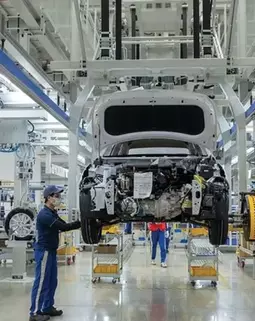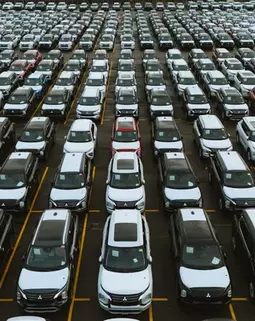This article is brought you by Vietwheels.com, Vietnam’s leading online marketplace to buy and sell cars.
The price of fuel seems to be increasing every day, which makes if difficult to for people to save money given the higher costs of living in Vietnam. Fuel is a necessary expense you can’t avoid if you drive a car, but this doesn’t mean you have to pay for high fuel costs. In this article, we discuss eight tips to help you save costs on the rising prices of fuel.
1. Know when and where fuel is cheapest
Different petrol stations offer different prices at different times. Consider using a fuel comparison app that lets you find the cheapest fuel price based on your location in real-time. Once you find the cheapest petrol stations near you, continue to monitor the trends of other stations as well the times and days the petrol stations offer the cheapest prices.
Consider purchasing fuel first thing in the morning or late in the evening. This is because fuel expands and contracts in hot and cold conditions. During the morning or evening (when it is a bit usually cooler than midday), fuel is in its densest form which means you actually get slightly more combustible matter with every litre.
You can also map out your journey and look for the cheapest fuel on your route. But if you have to go out of your way, do your maths to decide if the pursuit of cheaper fuel is worth it or not. In addition to knowing when and where fuel is cheapest, sign up for royalty and rewards points with your preferred petrol station companies so you receive regular discounts when fill up your tank.
2. Check your tyre pressure regularly
Did you know that every 1% drop in pressure sees an 0.3% uptick in fuel consumption? So, if your tyres are 20% below the recommended inflation, you’re using 4% more fuel.
Properly inflated tyres distribute your vehicle’s weight evenly and make the correct amount of contact with the road surface. Therefore, you should check the pressure of your tyres regularly using digital tyre pressure gauge. Inflate your car’s tyres to the pressure that is recommended by the car manufacturer.
You should only check your tyre pressure when your car hasn’t been driven for a couple of hours. The pressure inside your tyres increases as they heat up. If you set your pressures when your tyres are already warm, their pressure will probably be too low.
Be careful not to over-inflate tyres which can lead to uneven wear. Older tyres may have less traction which can affect rolling resistance and fuel economy. So always check if they need maintenance or replacing before you take the car out for a spin.
3. Check wheel alignment
In addition to checking your car’s tyre pressure, also check you’re the car’s wheel alignment. A car’s wheel alignment plays a significant role in fuel consumption. If the alignment is out, your car will be struggling to grip on the road and this will increase the amount of fuel required to move.
When a car’s wheels are not properly aligned, the engine has to work harder to keep moving. That extra energy comes straight out of the petrol tank. Have the alignment checked every 10,000km or twice a year to keep your tyres wearing evenly and cut fuel costs.
4. Avoid Excess Weight
The heavier your car is, the thirstier it becomes. The more weight you are carrying in your car, the more your engine has to work and the more fuel it uses. The additional drag caused by excess weight in your car increases your car’s fuel consumption. So if you carry things around in your car or boot that you don’t need, make sure you store it somewhere else so it doesn’t add excess weight in your car.
5. Use the recommended fuel type
If your car is designed to be operated with premium and you decide to use regular, you can expect slightly lower performance and fractionally higher consumption. Likewise, if you choose to use premium in a car that is supposed to be operated with regular, it may provide better fuel consumption in some newer vehicles, but it’s unlikely to offset the extra cost of the fuel. This is why you should follow the car manufacturers recommended fuel type.
6. Drive more efficiently
Your driving style has a major impact on fuel consumption. Unnecessarily accelerating fast or hard braking can increase fuel consumption by as much as 40%. You could save money on fuel simply by changing how you drive.
Limit taking off quickly in your car. The engine requires much less fuel when you accelerate and drive gently. Also, avoid braking hard and check that your car setting is in ‘eco’ or ‘comfort’ mode not ‘sports mode’ which consumes much more fuel consumption.
7. Keep your car maintained regularly
Show your car some love by getting it regularly serviced at your local car mechanic. Not only will this improve safety and condition for your car, but you will also save money on fuel.
For example, clean air filters will help your engine run more smoothly; so too does new oil. The injectors that spray fuel into the combustion chamber also become dirty and don’t spray correctly after time, causing the engine’s computer to over-compensate and spray in more than what is needed.
A car should be serviced every 10,000–15,000 km or every 6–12 months. Sticking to a regular servicing schedule not only minimizes the chances of mechanical breakdowns, but your car also runs a lot smoother and more efficiently when it’s running on clean and correct oil.
8. Consider purchasing a more fuel-efficient vehicle
Last but not least, consider buying or switching to a more economical vehicle. It might seem like a costly expense to start with, but after time, owning a more efficient vehicle could save you in the long run. Modern vehicles are getting more and more efficient, especially hybrid cars and electric vehicles.
Next time you inspect a vehicle for purchasing, take note on what the fuel consumption is by asking how many litres the car consumes per 100km. Hybrids and electric vehicles are usually most energy efficient, however they may be over your budget and expensive to maintain. There are also plenty of high-quality petrol and diesel cars available with good fuel efficiency in stock at Vietwheels.com. Please check our current inventory using this link.





